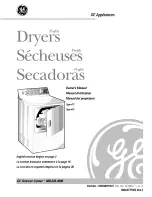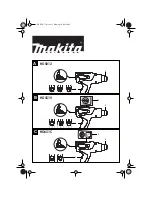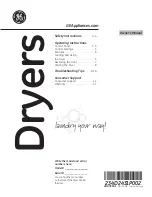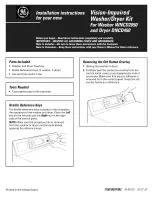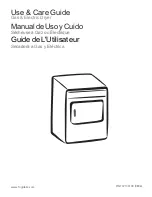
FTS Systems LyoStar™ 3
Praxair’s ControLyo™ Nucleation On-Demand
Technology
Rev 006, 01/14
49
© SP Scientific 2014
Importance of Controlled Nucleation
“Nucleation” denotes the onset of ice crystallization as the formulation is cooled during
the Freezing / Thermal Treatment phase of the lyophilization cycle. The temperature
at which nucleation occurs plays a key role in the outcome of the lyophilization
process. In a conventional lyophilization process, nucleation occurs randomly at a
temperature below the formulation’s thermodynamic freezing point.
The degree of super-cooling required for an aqueous solution can be defined as the
temperature difference between the thermodynamic freezing point of the solution and
the temperature at which ice nucleation first occurs. The onset of ice nucleation is a
stochastic event with the range of super-cooling depending on the solution properties
and process conditions. In lyophilization of pharmaceutical formulations, the degree of
super-cooling is normally higher in production than it is at the laboratory scale, due to
the cleaner conditions and significantly reduced airborne particles in cGMP
manufacturing environments. Nucleation occurs randomly from container to container
with super-cooling of -10 °C to -20 °C being common. The degree of super-cooling is
important because it determines the number of ice nuclei formed and thus the number
and size of ice crystals in the frozen material. As a result, the degree of super-cooling
can have a significant effect on the drying process and resulting cake structure.
Praxair’s ControLyo™ Nucleation On-Demand Technology enables nucleation of all
containers in the freeze-dryer at a defined time and temperature below the
thermodynamic freezing point of the formulation and thereby provides much improved
control over super-cooling. It should be noted that Praxair’s ControLyo™ Nucleation
On-Demand Technology cannot arbitrarily prevent the contents of a container from
nucleating, especially if foreign particles are present in the formulation that could act
as nucleating agents. Praxair’s ControLyo™ Nucleation On-Demand Technology can
make a container nucleate at the desired conditions prior to its spontaneous
nucleation. As such, it is very useful for achieving uniform nucleation of all product
containers at warmer nucleation temperatures than might otherwise occur.
Previous investigations have shown that nucleation behavior can significantly
influence important lyophilization process and product attributes, including cake
microstructure, drying rate, protein aggregation, reconstitution, vial cracking, product
uniformity, and cake elegance. Praxair’s ControLyo™ Nucleation On-Demand
Technology therefore represents a potentially powerful tool for improving lyophilization
processes. A full discussion of the potential benefits achievable with nucleation control
is outside the scope of this document; only some general comments are provided
below. It should be understood that the specific impact of nucleation control on any
process or product attribute will depend on the nature of the formulation and the other
lyophilization process steps.
A lower degree of super-cooling (
i.e.
, warmer nucleation) generally produces larger
ice crystals, which upon sublimation in drying steps 1-16 leave behind larger pores.
Larger pores can significantly reduce the mass transfer resistance of the cake to
shorten the drying time and lower the product temperature during drying steps 1-16
compared to the smaller pores resulting from uncontrolled, colder nucleation
conditions. Proteins tend to aggregate on the surface of ice, and the larger ice crystals
obtained with warmer nucleation temperatures can alleviate aggregation stress on
sensitive proteins. Additionally, larger pores in the cake structure can result in a faster
reconstitution of the cake. Furthermore, one of the important goals of the freezing step
during lyophilization is to produce a uniform batch, which is often difficult to achieve
because of the stochastic nature of nucleation. By removing nucleation heterogeneity,
ControLyo™ technology can significantly improve homogeneity of the lyophilization
process to within the limits of the heat transfer uniformity of the freeze-drying
equipment and containers.
Summary of Contents for LYOSTAR 3
Page 2: ......
Page 6: ...iv Rev 006 01 14 SP Scientific 2014...
Page 10: ...Contents FTS Systems LyoStar 3 viii Rev 006 01 14 SP Scientific 2014...
Page 18: ...Getting Started FTS Systems LyoStar 3 8 Rev 006 01 14 SP Scientific 2014...
Page 30: ...Operating your Lyophilizer FTS Systems LyoStar 3 20 Rev 006 01 14 SP Scientific 2014...
Page 36: ...Liquid Nitrogen Trap FTS Systems LyoStar 3 26 Rev 006 01 14 SP Scientific 2014...
Page 48: ...Sample Extractor Assemblies FTS Systems LyoStar 3 38 Rev 006 01 14 SP Scientific 2014...
Page 52: ...Stoppering FTS Systems LyoStar 3 42 Rev 006 01 14 SP Scientific 2014...
Page 56: ...Shelf Latching FTS Systems LyoStar 3 46 Rev 006 01 14 SP Scientific 2014...
Page 74: ...Appendix A Sample Recipe FTS Systems LyoStar 3 64 Rev 006 01 14 SP Scientific 2014...
Page 80: ...Appendix C Stainless Steel Cleaners FTS Systems LyoStar 3 70 Rev 006 01 14 SP Scientific 2014...
Page 81: ......































